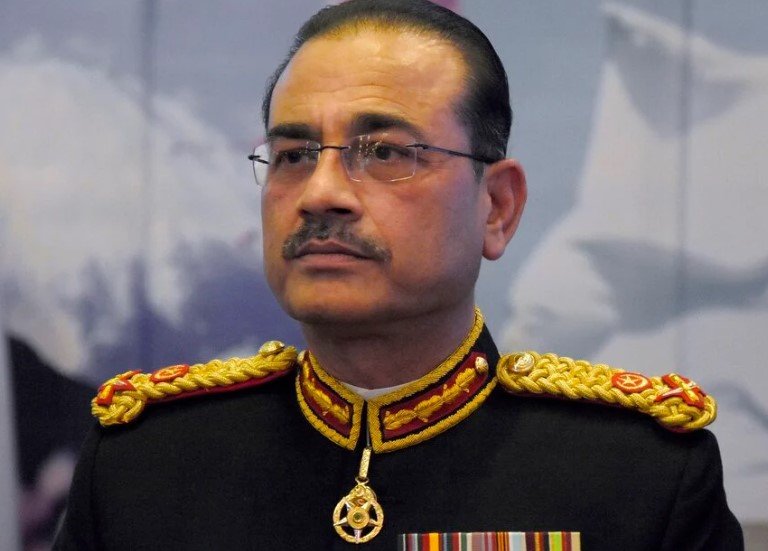War of words erupts after India’s top general links Beijing’s “live support” to Pakistan’s military during four-day standoff
Pakistan Army Chief General Asim Munir is fuming. Just hours after India’s Deputy Army Chief Lt Gen Rahul R. Singh openly accused China of backing Pakistan during the recent four-day Operation Sindoor conflict, Munir fired back — calling the claims “irresponsible and factually incorrect.”
This isn’t just a diplomatic spat. It’s part of a wider shift in South Asia’s security narrative, where battlefield dynamics are now closely watched for signs of geopolitical entanglement. And the latest exchange adds fuel to an already tense India–Pakistan–China triangle.
India’s Accusation: Pakistan Wasn’t Alone
Lt Gen Rahul Singh didn’t mince words. Speaking at a FICCI event in New Delhi, he stated that the Indian Army had “clear evidence” of Chinese involvement behind the scenes during Operation Sindoor. According to him, Beijing wasn’t just selling arms — it was using the battlefield as a test site.
He pointed to hard numbers too. Singh said 81% of Pakistan’s military hardware over the last five years had been sourced from China.
And that wasn’t all. He also claimed that Turkey provided key assistance during the conflict — painting a picture where India wasn’t just facing Pakistan, but a more coordinated axis involving Ankara and Beijing.
One sentence from Singh cut through the noise: “It is like a live lab available to them.” That set off alarms in Islamabad.

Munir’s Pushback: No External Hand, No Apologies
Asim Munir wasn’t having any of it.
Speaking at the National Defence University in Islamabad to a room of graduating officers, Munir said attempts to blame external support reflected “a chronic reluctance to acknowledge indigenous capability.”
He added that Pakistan’s Operation Bunyanum Marsoos — its codename for the response to India’s Op Sindoor — was entirely domestic in design, strategy, and execution. In short, he was saying: we did this ourselves.
Then came the warning shot.
“Any attempt to target our population centres, military bases, economic hubs and ports will instantly invoke a deeply hurting and more than reciprocal response,” Munir declared.
And that wasn’t a bluff. Pakistani analysts say that while Munir avoided directly naming India, the phrasing was clearly aimed across the border.
An Arms Bazaar or a Battlefield?
The numbers mentioned by India do match independent research. Stockholm International Peace Research Institute (SIPRI) data from 2024 confirms that China was the source of more than 80% of Pakistan’s military imports in recent years. Everything from UAVs to missile systems.
But what complicates things is how those imports are being used.
Lt Gen Singh’s allegation suggests this wasn’t just trade — it was real-time support, surveillance, and maybe even strategic guidance.
-
81% of Pakistan’s military imports come from China
-
Turkish defense firms provided ISR (Intelligence, Surveillance, Reconnaissance) systems in 2023
-
Chinese-origin UAVs and precision missile systems were observed in action during Op Sindoor, according to Indian battlefield assessments
For India, that’s enough to ring alarm bells. For Pakistan, it’s offensive.
Battlefront Narratives, Diplomatic Messaging
This clash of words didn’t happen in isolation. Operation Sindoor, while short-lived, has already become one of the most closely dissected flashpoints in recent India–Pakistan history.
India claims the operation exposed Pakistan’s over-dependence on Beijing and Ankara. Pakistan counters that India is manufacturing distractions to downplay what it calls “tactical and psychological success” on the ground.
But strip away the political theater, and something deeper is playing out: both sides are using media and military podiums to shape public perception — at home and abroad.
Here’s what that looked like side-by-side:
| Statement | India | Pakistan |
|---|---|---|
| Accusation | China was “active behind the scenes” during conflict | “No external support, purely indigenous operation” |
| Justification | Military data shows heavy Chinese arms flow | Data misrepresents operational autonomy |
| Warning | Multi-front threat acknowledged (China, Pakistan, Turkey) | “Swift and more-than-reciprocal response” promised |
| Diplomatic message | India urges global scrutiny on China-Pak military ties | Pakistan accuses India of “camp politics” |
Veiled Threats, Clear Frustrations
Munir’s remarks weren’t just rebuttals. They carried a chilling subtext. His language about responding without “constraints or inhibitions” suggests a military establishment increasingly confident — or at least keen to project that confidence.
He framed Pakistan’s foreign partnerships as built on “mutual respect and peace,” while taking a jab at India’s “parochial self-alignment.”
One Pakistani defense analyst told a local TV station, “This is as close as we get to nuclear posturing without saying the N-word.”
That might sound dramatic, but given the regional context, it can’t be brushed off.
Turkey’s Role Raises Eyebrows Too
Lost in the noise about China was India’s comment on Turkey. Lt Gen Singh said Ankara had “played an important role” in aiding Pakistan. He didn’t go into detail, but defense insiders say Turkish drone surveillance and real-time battlefield imaging may have been shared during Operation Sindoor.
Turkey and Pakistan have tightened military cooperation in the last three years. From naval shipbuilding projects to intelligence sharing, Ankara’s defense industry has quietly become a key ally.
India is watching all this very closely.
What Happens Now?
As of Tuesday morning, no official Chinese statement had responded to the allegations. Beijing’s silence may be strategic — the less said, the less they commit to.
But analysts in Delhi suggest India could raise the issue in bilateral forums or behind closed doors at strategic platforms like the SCO or G20.
Meanwhile, back in Islamabad, Munir’s words are being replayed on TV, amplified in headlines, and dissected on military podcasts.
And so, what started as a 96-hour conflict on the ground has morphed into a months-long tug-of-war in front of the microphones.
